Grizzly hackle is something which most tyers use all the time and which we all take for granted, but in my eyes grizzly isn't nearly as appreciated as it deserves to be
I have heard CDC feathers pronounced a miracle feather many times (Dutch Leon Links does it in the subtitle of his excellent CDC book), and many great and innovative tyers have utilized this wonderful feather to create some fantastic flies.
But while CDC might be a miracle, good old plain grizzly hackle must take the prize as a miracle and then some. It's probably the most used feather of the fly tying world. These barred black, gray and white feathers are simply the workhorses of fly tying materials, used in so many ways in thousands of patterns.
In my eyes, grizzly is something which isn't nearly as appreciated as it deserves.
It's readily available, it comes in countless shapes, colors and qualities, it's not extremely expensive and it's so versatile.
Grizzly is a plain wonder of a feather!
Grizzly is a plain wonder of a feather!
Plymouth Rock
Grizzly hackle comes from chickens. Other birds do produce a similar pattern in all or some of their plumage in various colors, but none are used as much in fly tying as the grizzly chicken feathers. You will find barring on many ducks like woodduck, teal or mallard, but these feathers are different from chicken feathers and not used nearly as often.
The birds that are responsible for delivering these feathers are almost exclusively the barred Plymouth Rock breed – hens and roosters. The Plymouth Rock is a very popular and common breed of chickens, originally from the US, but also known in Europe and other parts of the world under other names than Plymouth Rock. You will find barred chicken breeds called Barred Orpington (AKA Crele or Cuckoo Orpington), Amrock and Barred Rock while other names local to their country or region like Coucou Marans or Coucou de Renne and even some types of Gallo de Leon.
The Plymouth Rock is a very popular breed with people who have non-industrial chickens on farms and in gardens, liked for their good and plenty meat and large brown eggs. The breed has a good temper and is easy to manage. It's also a good sitter, which is important for those who want their flock to grow.
And to us fly tyers it has one more important trait: it grows grizzly feathers!
The pattern
The pattern on the chicken is called barred because of its striped appearance. In reality the bird as a whole is not striped like a zebra, but that's another matter. The "stripes" are present because each individual feather is barred, typically altering between black and white, but sometimes also with gray bands and in rare cases cream, ginger and brown bands.
The color changes are caused by pigment in the feathers. The black and gray bars contain a black pigment called eumelanine, the white bars have no pigment, but are simply light or translucent as the keratin that is the basic substance of feathers.
The bars are formed as the feather grows because of certain cells in the follicle going through a cycle of producing pigment. Each barb on the feather is barred, and it's not a change between colored and neutral barbs that causes the stripes.
Not all feathers are perfectly barred. Some are mottled and some have less defined transitions between light and dark.
Grizzly
I haven't really been able to establish why we as fly tyers call the feathers grizzly (see comments below for an explanation), other than the fact that they can appear grayish or leaden, which can be a meaning of the word. It probably has nothing to do with bears.
In the chicken breeders' world it's called barred, and I don't imagine that breeders who don't supply fly tying feathers will know what a grizzly plumage is.
The barring can vary from very clearly defined black and white to a "smudgier" and less defined pattern, sometimes gray more than black in the darker bands and sometimes hardly barred but more like randomly variegated.
Cree
Sometimes the black bars will be alternating with red, ginger or brown ones (or all three) caused by another pigment, phaeomelanin, in which case we get a so called cree hackle. The cree feathers are pretty rare because they can't be bred consistently, but seem to appear now and then in a line of B/W barred birds.
Among chicken breeders birds in these colors as well as plainly barred birds are sometimes called Crele, and the name cree might be a transformation of that name.
As a side note it should be mentioned that "true" cree feathers with five colored bars – black, white, cream, brown and red (ginger) – are really rare. They cannot be bred on purpose, but appear now and then in barred flocks. Dennis Conrad of Conranch Hackle writes about his work with cree birds in this article on Flyanglers Online, probably published sometime in 2008.
As you can read he has had some success in breeding cree birds, but still can't get the "true cree" feathers by simple genetic selection.
So even today cree is rare, and when a good cree saddle or cape appears, it typically goes for a pretty hefty price. A lot of other almost random variants can be found on the marked, badger types, barred feathers and even patches with a mix of grizzly, badger and some "cree-ish" feathers.
You will find variants called grizzly ginger, barred ginger, barred dun, dun cree, light cree and other names. These are often very light cree, missing the darker colors, but still with visible barring, and are mostly one-off variations, which are offered by dealers now and then, compared to cree they are much less expensive, but also have a tendency to appear less barred than "real" cree or grizzly when wrapped as a hackle.
Rooster grizzly feathers
|
|
|
|
|
|
|
|
|
|
|
|
Cree and other types
|
|
|
|
|
|
|
|
Hen feathers
|
|
|
|
|
|
In use
When used, the barred feathers form patterns on the fly. The simplest way of using them is just to use a full feather as a side on a streamer or baitfish pattern or a wing on a dry fly. The barring forms a pattern that looks like structures on the natural: the scales or segments on fish or the variegated pattern on insect wings.
When wrapping the grizzly feathers as a hackle you will get the same effect. When wrapped on dry flies, shrimps or scuds the feathers make an almost perfect illusion of multiple legs or other appendages. And quite a lot of legs, antennae and the like on the prey we are trying to imitate, do actually have stripes or darker bands.
In some cases the feathers also add the impression of movement like fluttering wings, oscillating legs of fins that make fast swimming motions.
Many streamer and saltwater fly patterns utilize the barring. Deceivers, flatwings, many pike flies and classic North East streamers have sides and wings made from grizzly, and many a classic dry fly will feature wings or hackle taken from a grizzly saddle or neck.
Larry Leight
Cape, neck, saddle, breast
Feathers are sold in many forms, but the most common in the fly tying world is capes and saddles. When looking for stiff and spiky feather barbs as desired for most dry flies, you typically opt for rooster feathers. They have the best feathers in that regard. Some rosters have softer feathers. The hens have much softer and "webbier" feathers, but they are also shorter and rounder.
The cape or the neck typically contains a large variety of feather sizes, often down to some very small ones found high on the neck of the bird close to the comb. The neck feathers are often tapered and shorter than the ones on the saddle, which will mostly contain longer and more consistent feathers. Cock saddles will contain the longest feathers, and in modern genetic breeds these can be extremely long. Other saddles contain more tapered and varied shapes, but often longer and larger than the neck feathers.
The hen feathers are softer and more rounded both on the neck and saddle, and very popular for soft hackled flies, wet flies and as winging material.
The front and underside of the bird – both male and female – also contains softer feathers, and between the legs and behind them you will find smaller marabou-like feathers. The skin patch from breast and underside is often called Chickabou – short for chicken marabou. The Chickabou patches often contain both short, soft hackle feathers as well as marabou-like feathers and offer a very good supply of feathers for buggers, Baltic sea trout flies and other saltwater flies.
Dyed feathers
Like other feathers, grizzly comes in a large number of dyed colors. The naturals vary in "blackness" and sometimes appear almost light gray as a whole, but there are no chestnut, ginger or blue dun grizzly feathers (apart from the above mentioned cree types). It's variations and mixes of black and white.
So dying the feathers is an obvious way to get variation, and you can get grizzly dyed in "natural" colors as well as all kinds of bright colors. When dyed, it's the lighter parts – white as well as gray – that show the dye best, while black bars remain black and can give some really amazing effects.
Most dyed grizzly feathers were originally on the light side, while it's fairly rare to find the distinctly black barred ones in dyed versions.
Uses
The grizzly feathers can of course be used for any application where you'd use feathers: hackling, winging, tailing, dubbing or whatever you can imagine. Grizzly comes in all imaginable forms and qualities, even more so than many other feather colors and patterns.
Many tyers will have a selection of grizzly in various sizes and qualities, and because of the wide selection available grizzly is almost always an option for a given fly pattern.
Grizzly is also easy to find in shops, and although prices do depend on quality, grizzly can be slightly less expensive than other colors such as furnace, badger, ginger and blue dun, which are rarer to find on the shelves. This makes it possible for many fly tyers to amass a good selection of grizzly in their collection of feathers.
And fly tyers should do exactly that. When it comes to fishing flies, grizzly feathers are a must-have, and owning a selection of capes, saddles from both roosters and hens as well as chickabou patches means that you will have grizzly feathers for a wealth of different patterns.
Some links
You will find a whole bunch of interesting grizzly and cree variants as well as "clean" grizzly feathers at the Feather Emporium.
Of course Whiting Farms, the largest producer of fly tying feathers in the world, has all kinds of grizzly in their selection.
- Log in to post comments

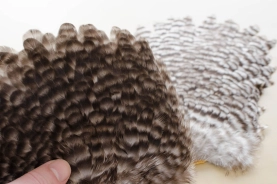
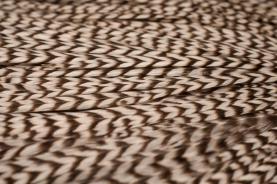
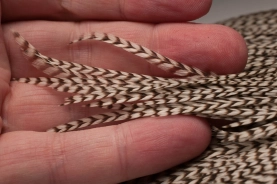

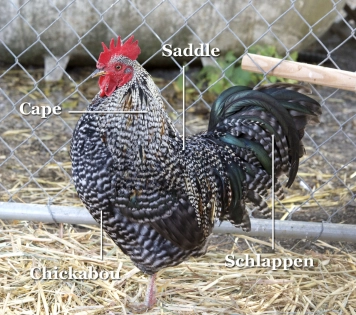
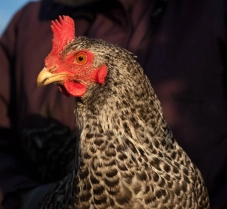

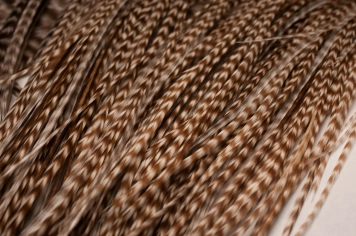
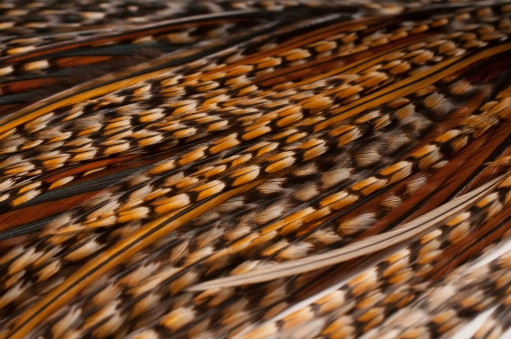
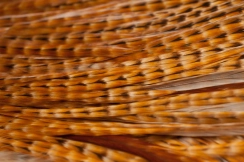
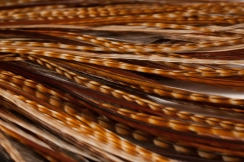
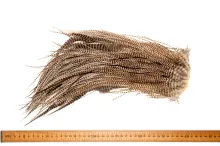
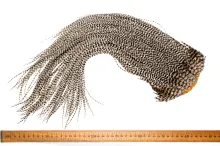
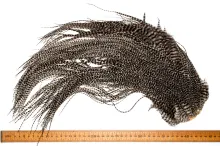


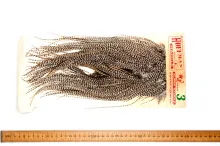
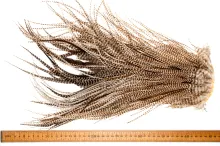
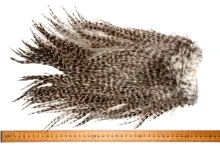
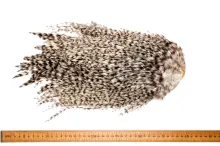
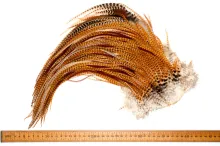
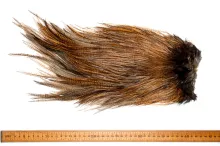
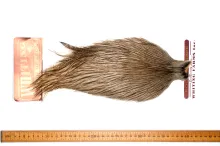
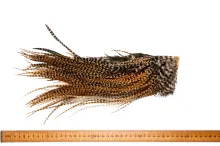

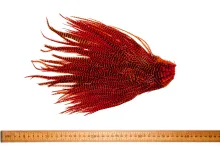
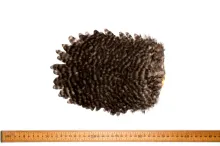
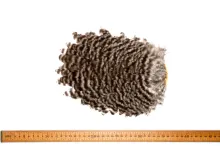
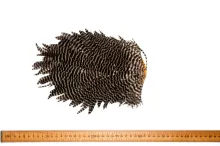
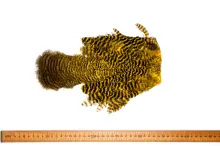
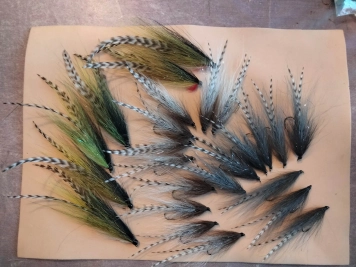
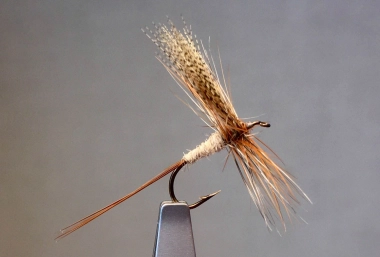
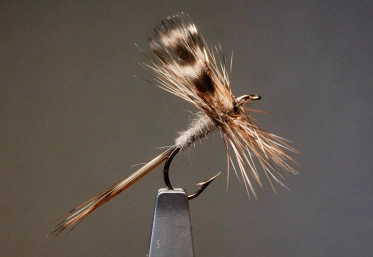
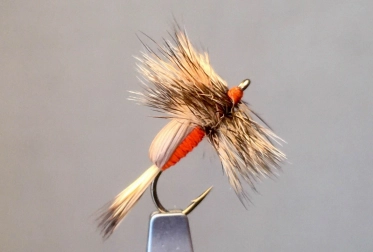
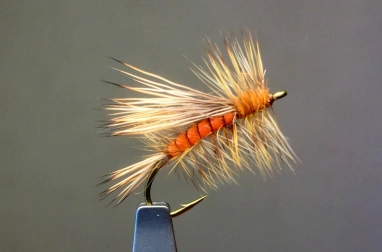
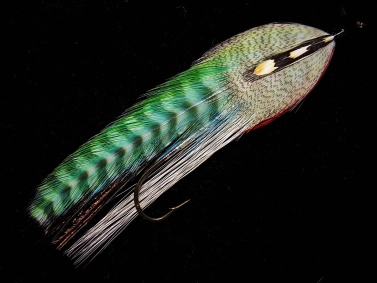
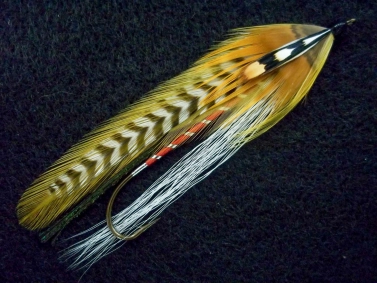
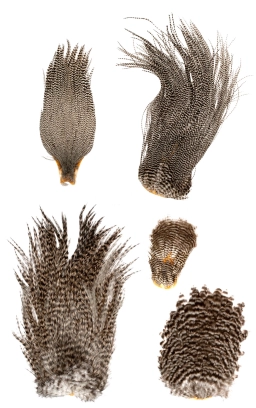
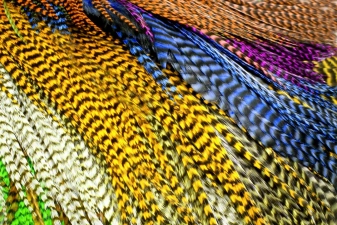
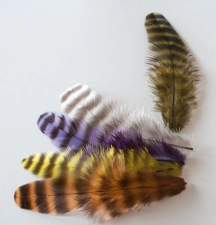
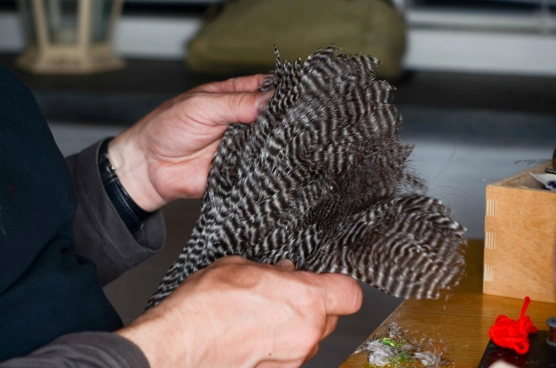
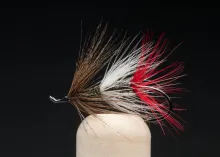
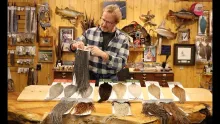
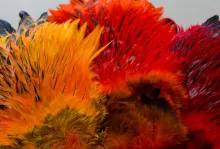


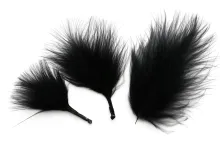

Grizzly is probably a corruption of the word grizzle
And grizzle refers to someone with a mixture of dark and white hair. Nevertheless, this is a wonderful article.
So right!
Bert,
You are so right! I didn't think of that at all:
grizzle
/ˈɡrɪz(ə)l/
adjective
(of hair or fur) having dark and white hairs mixed. "grizzle-haired"
noun
a mixture of dark and white hairs.
Thanks!
Martin